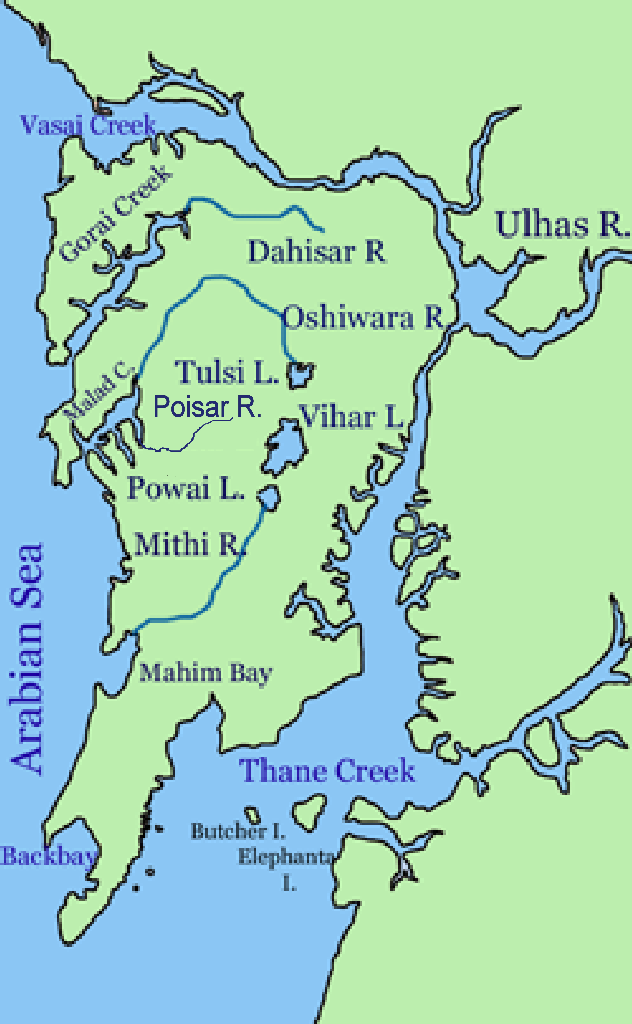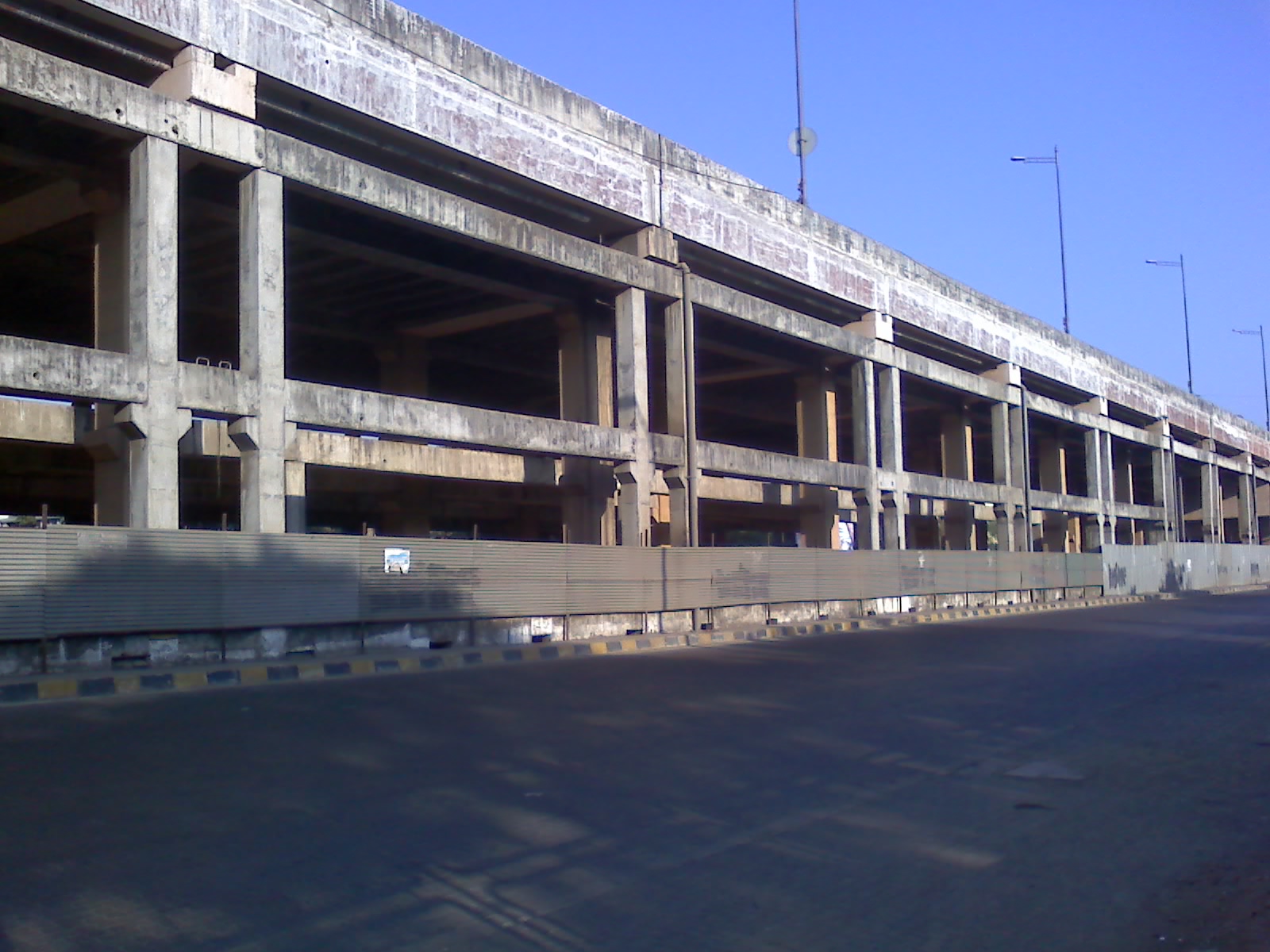|
Vihar Lake
Vihar Lake (Pronunciation: ŗi╔”a╦É╔Š is located near Vihar village on the Mithi River within the precincts of the Borivali National Park, also called the Sanjay Gandhi National Park, in North Mumbai. When built in 1860 (construction started in 1856), it was considered as the largest lake in Mumbai in the Salsette group of islands. It is hemmed between the Tulsi Lake and the Powai Lake (shown in map). It partly meets the drinking water needs of the Mumbai region. Bombay water supply history It supplies only 3% of the Mumbai city's water requirement, after filtration at Bhandup where the large water filtration plant is located. History [...More Info...] [...Related Items...] OR: [Wikipedia] [Google] [Baidu] |
Sanjay Gandhi National Park
Sanjay Gandhi National Park, also known as SGNP, is an protected area in Mumbai, Maharashtra. It was established in 1969 with its headquarters situated at Borivali. The 2400-year-old Kanheri caves, sculpted by monks out of the rocky basaltic cliffs, lie within the park. The rich flora and fauna of the Sanjay Gandhi National Park attract more than 2 million visitors every year. History The area of the Sanjay Gandhi National Park has a long written history dating back to the 4th Century BCE. In Ancient India, Sopara and Kalyan were two ports in its vicinity that traded with ancient civilisations such as Greece and Mesopotamia. The land route between these two ports was partially passing through this forest. The Kanheri caves, located centrally in the park, were important Buddhist learning centres and pilgrimage sites sculpted by Buddhist monks (using primitive sculpting tools) between the 9th and the 1st centuries BCE. They were chiselled out of a massive basaltic rock outcr ... [...More Info...] [...Related Items...] OR: [Wikipedia] [Google] [Baidu] |
Brihanmumbai Municipal Corporation
The Brihanmumbai Municipal Corporation (BMC; IAST: ), also known as the Municipal Corporation of Greater Mumbai (MCGM), is the governing civic body of Mumbai, the capital city of Maharashtra. It is India's richest municipal corporation. The BMC's annual budget exceeds that of some of India's smaller states. It was established under the Bombay Municipal Corporation Act 1888. BMC is responsible for the civic infrastructure and administration of the city and some suburbs. Brihanmumbai Municipal Corporation has been formed with functions to improve the infrastructure of town. __TOC__ Administration The BMC is headed by an IAS officer who serves as Municipal Commissioner, wielding executive power. A quinquennial election is held to elect corporators, who are responsible for basic civic infrastructure and enforcing duty. The Mayor, usually from the majority party, serves as head of the house. As of June 2008, all administrative business in the BMC was conducted in Marathi, a decisi ... [...More Info...] [...Related Items...] OR: [Wikipedia] [Google] [Baidu] |
Maharashtra
Maharashtra (; , abbr. MH or Maha) is a states and union territories of India, state in the western India, western peninsular region of India occupying a substantial portion of the Deccan Plateau. Maharashtra is the List of states and union territories of India by population, second-most populous state in India and the second-most populous country subdivision globally. It was formed on 1 May 1960 by splitting the bilingual Bombay State, which had existed since 1956, into majority Marathi language, Marathi-speaking Maharashtra and Gujarati language, Gujarati-speaking Gujarat. Maharashtra is home to the Marathi people, the predominant ethno-linguistic group, who speak the Marathi language, Marathi language, the official language of the state. The state is divided into 6 Divisions of Maharashtra, divisions and 36 List of districts of Maharashtra, districts, with the state capital being Mumbai, the List of million-plus urban agglomerations in India, most populous urban area in India ... [...More Info...] [...Related Items...] OR: [Wikipedia] [Google] [Baidu] |
National Institute Of Oceanography, India
The National Institute of Oceanography, founded on 1 January 1966 as one of 38 constituent laboratories of the CSIR, is a self-governing research organisation in India that conducts scientific research and studies on the unique oceanographic features of the Northern Indian Ocean. It is headquartered in Goa and has regional offices in Kochi, Mumbai, and Vizag , image_alt = , image_caption = From top, left to right: Visakhapatnam aerial view, Vizag seaport, Simhachalam Temple, Aerial view of Rushikonda Beach, Beach road, Novotel Visakhapatnam, INS Kursura submarine museu .... History By the 1950s, oceanographers all over the world realised that, while progress had been made in describing and understanding the observed features of the Atlantic and Pacific Oceans, the Indian Ocean remained largely unexplored. It was critical to address fundamental oceanographic issues related to the northern Indian Ocean's monsoonal cycles, chemical properties ... [...More Info...] [...Related Items...] OR: [Wikipedia] [Google] [Baidu] |
Mahim Creek 1
Mahim (Marathi pronunciation: a╦É╔”i╦Ém(Marathi: Óż«ÓżŠÓż╣Óż┐Óż«) is a neighbourhood in Mumbai, Maharashtra, India. The Mahim Junction railway station on the Western Railway and Harbour Railway of the Mumbai Suburban Railway network is the last station of the city, as neighboring Bandra comes in Mumbai Suburb. Mahim is an ethnically and religiously diverse town and has a Hindu temple, church, mosque and Parsi fire-temple existing within a few meters of each other. The town has a large Rich and Upper Middle class Marathi population. History The name Mahim is derived from the ancient ''Mahikavati'' meaning "miraculous" in Sanskrit. Other historical names for the area include ''Mahimawati,'' ''Maijim'', and ''Mejambu''. Mahim was one of the seven islands that originally made up Mumbai. Mahim, or Mahikavati as it was known, was the capital of Raja Bhimdev, who reigned over the region in the 13th century. He built a palace and a court of justice in Prabhadevi, as well as the ... [...More Info...] [...Related Items...] OR: [Wikipedia] [Google] [Baidu] |
Crocodile
Crocodiles (family (biology), family Crocodylidae) or true crocodiles are large semiaquatic reptiles that live throughout the tropics in Africa, Asia, the Americas and Australia. The term crocodile is sometimes used even more loosely to include all extant taxon, extant members of the order (biology), order Crocodilia, which includes the alligators and caimans (family Alligatoridae), the gharial and false gharial (family Gavialidae) among other extinct taxa. Although they appear similar, crocodiles, alligators and the gharial belong to separate biological family (biology), families. The gharial, with its narrow snout, is easier to distinguish, while Morphology (biology), morphological differences are more difficult to spot in crocodiles and alligators. The most obvious external differences are visible in the head, with crocodiles having narrower and longer heads, with a more V-shaped than a U-shaped snout compared to alligators and caimans. Another obvious trait is that the upp ... [...More Info...] [...Related Items...] OR: [Wikipedia] [Google] [Baidu] |
River Mithi 1
A river is a natural flowing watercourse, usually freshwater, flowing towards an ocean, sea, lake or another river. In some cases, a river flows into the ground and becomes dry at the end of its course without reaching another body of water. Small rivers can be referred to using names such as creek, brook, rivulet, and rill. There are no official definitions for the generic term river as applied to geographic features, although in some countries or communities a stream is defined by its size. Many names for small rivers are specific to geographic location; examples are "run" in some parts of the United States, "burn" in Scotland and northeast England, and "beck" in northern England. Sometimes a river is defined as being larger than a creek, but not always: the language is vague. Rivers are part of the water cycle. Water generally collects in a river from precipitation through a drainage basin from surface runoff and other sources such as groundwater recharge, springs, a ... [...More Info...] [...Related Items...] OR: [Wikipedia] [Google] [Baidu] |
Bollywood
Hindi cinema, popularly known as Bollywood and formerly as Bombay cinema, refers to the film industry based in Mumbai, engaged in production of motion pictures in Hindi language. The popular term Bollywood, is a portmanteau of "Bombay" (former name of Mumbai) and " Hollywood". The industry is a part of the larger Indian cinema, which also includes South Cinema and other smaller film industries. In 2017, Indian cinema produced 1,986 feature films, of which the largest number, 364 have been from Hindi. , Hindi cinema represented 43 percent of Indian net box-office revenue; Tamil and Telugu cinema represented 36 percent, and the remaining regional cinema constituted 21 percent. Hindi cinema has overtaken the U.S. film industry to become the largest centre for film production in the world. In 2001 ticket sales, Indian cinema (including Hindi films) reportedly sold an estimated 3.6 billion tickets worldwide, compared to Hollywood's 2.6 billion tickets sold. Earlier Hindi film ... [...More Info...] [...Related Items...] OR: [Wikipedia] [Google] [Baidu] |
Andheri
Andheri ( Ön╠¬d╠¬╩▒e╔Ši╦É is a locality in the western part of the city of Mumbai in India. Udayanagari, the name of a hill near the Mahakali caves, inspired the name Andheri. On the former islet of Versova, also known as Vasave, there was another cluster of native East Indians. Andheri east and west are key areas in Mumbai, with several film studios and TV news channels.┬Āhigh-profile police cases. Andheri west┬Āis covered by a fire complaint filed at the Oshiwara police station. MIDC, Andheri has a jewelry production unit (east). Government For administrative purposes, the area is separated into Andheri West and Andheri East. Andheri West comes under K/W ward of the Brihanmumbai Municipal Corporation while Andheri East comes under the K/E ward of the same. Transportation The Andheri railway station is among the busiest railway stations in the city The expansion of the Mumbai Metro in the Versova-Andheri-Ghatkopar corridor is a part of the government's master transportati ... [...More Info...] [...Related Items...] OR: [Wikipedia] [Google] [Baidu] |
Kurla
Kurla (Pronunciation: u╔Šla╦É is a neighbourhood of East Mumbai, India. It is the headquarters of the Kurla taluka of Mumbai Suburban district. The neighbourhood is named after the eponymous East Indian village that it grew out of. It falls under Zone 5, Ward 'L' of the Bombay Municipal Corporation. Its railway station, spelt as ''Coorla'' until 1890, is one of the busiest on the Mumbai suburban railway on the central and harbour railway lines of Mumbai as is the Lokmanya Tilak Terminus (LTT) for out-station passenger/express trains. History Kurla gets its name from the East Indian village of Kurla, whose name, in turn, originated from "Kurli", the local name for crab, as these were found in plenty in marshes in the vicinity of the village. The village of Kurla came under Portuguese rule when the Treaty of Bassein (1534) was signed by Sultan Bahadur of Gujarat and the Kingdom of Portugal on 23 December 1534. In 1548, the village of Kurla and six other villages were given ... [...More Info...] [...Related Items...] OR: [Wikipedia] [Google] [Baidu] |
John Elphinstone, 13th Lord Elphinstone
John Elphinstone, 13th Lord Elphinstone, 1st Baron Elphinstone, (23 June 1807 ŌĆō 19 July 1860) was a Scottish soldier, politician and colonial administrator. He was twice elected to the Parliament of the United Kingdom as a Scottish Representative peer, serving once from 14 January 1833 to 29 December 1834 and then again from 8 September 1847 to 23 April 1859. His political career also included the governorships of Madras and of Bombay. Life The only son of John Elphinstone, 12th Lord Elphinstone in the peerage of Scotland, he was born on 23 June 1807. He succeeded his father as Lord Elphinstone in May 1813, and entered the army in 1826 as a cornet in the Royal Horse Guards. He was promoted lieutenant in 1828, and captain in 1832, and was a lord in waiting to William IV from 1835 to 1837. The king made him a Knight Grand Cross of the Royal Guelphic Order in 1836, in which year he was sworn of the privy council. In 1837, he left the Guards on being appointed governor of Madras ... [...More Info...] [...Related Items...] OR: [Wikipedia] [Google] [Baidu] |






